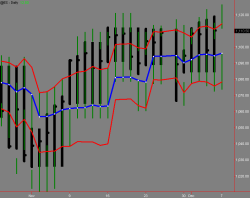 Learning About Moving Averages with a Technical Analysis Course Most models are based upon a system of moving averages . Some are difficult and include many unknowns. A bead is drawn on a trend direction by most models after it has been manifested and will keep you in the market as long as the trend is unchanged . A few moving averages try to forsee trend changes . These ones can be lucrative to a good trader that can initiate a position that is recommended and can underlie more losing than winning trades . A technical analysis course shows that the thought behind moving averages ( MA ) is figuring when the price direction differs from recent price averages. As long as the price average is lower than the current price of the last 10 days, 20 days, or even 90 days the trend continues . The most ordinarily observed average is the 10 day MA of the closing prices. The benefit of this method is that the same weight is given to the price of each day. The assumption of the MA is that yesterday's prices and those from last week get the same importance with a trader. This doesn't stick to reality . A short term trader's horizon is extremely limited . Commodity prices do vibrate more rapidly than the prices of most other investment forms , therefore, a shorter series usually performs best . An ideal MA should : 1) should be able to observe a major turn of a price trend at once and not several days after the turn 2) we do not want the MA plot so close to the plots of the daily prices that we get lashed into consolidation or minor swings. 3) the moving MA plot has to be adjustable to the commodities volatility . 4) if the commodity locks limit the MA plot should be responsive . The short comings to this approach is that moving average lines may be too languid to use as a reversal indicator . Most of the time, MA technicians have their trading decisions guided by changes in the price market relative to the moving average line . As the MA is more sensitive the smaller the degree and amount of the advance differential and the larger the number of sell and buy points , resulting in much whip-saw and consequent small losses as taught by a technical analysis course. Of course , the shorter time span there is , the more the MA is sensitive to a reversal or trend termination . New trends will be acted on earlier and don't need as much time to get established . Yet , tarders usually pay for the sensitivity because, and to repeat , the shorter the MA the larger the trades that are made with the addition of greater commissions to the whip-saw losses . This means, moving averages has a delay in showing price trend turns. Many times the delay is much greater than would be the case using P&L charting, simple charts, or point and figure charting . The main advantage of this position is that the each trend of substance has the user automatically put on board ( as do all systems of trend following .) More can be found out from a technical analysis course.
0 Comments
Never in my life have I seen something like all the methods that are coming out to use in commodity price forecasting . There are many approaches and techniques . This chapter will present rather briefly, but a few .
There are some that are standard and this author will place an asterisk beside the ones which he personally uses . In this chapter alone there are approximately thirty-six ways and means of forecasting prices . This does not take into consideration the various great tidbits that can be found with a technical analysis course. ( I'm quite thrilled with P&L charting, for it lets this author on a daily basis and more be able to quantify price action. There is no other system I know of where more than trend or congestion the activity of the day means more in which the prices are being traded. Each day's activity through the use of P&L charting shows congestion or trend evolution , in some cases, in a day. ) Of course, , this author is most irritated by those traders who are convinced that their moving average, point and figure, resistance index, volume oscillator, balance volume, weighted moving averages , and who knows what else, - cash, basis , - are the only system which is effective. And, the system they use is the only one that will ever be effective and that they have no use for fundamentals, open interest, wave theories, chart patterns, point and figure, many others, and seem to be blind to approaches evolved by others. ( There . I was able to get that out.) Many times these traders do not even use their own systems and to me it seems, to always be fighting the market . If you assume the trader has gone through a technical analysis course and they have a plan for trading that combines various price forecasting methods and they are combined to help him profit from the market continually, then listening to this trader is a good idea . In the section on planning , the author will show his approaches to the market place and you will be surprised how flexible he is . In order to analyze commodity price behavior on the market, there are 3 methods . 1. fundamental 2. mechanical 3. technical FUNDAMENTAL In some cases the market ends up going opposite of considerations that are fundamental due to technical and other factors . Price movements in the long range are what the fundamental trader is interested in and must be prepared to wait it out . Fundamentalists may deny it , but you must take into account too many external factors , such as the natural response to fundamental influences , reflected in the fluctuations day by day . So for analysis, there is now reason to seek them out . MECHANICAL Methods that are mechanical use price and price alone to figure out what action to go with and this action does not require any decision on the part of the trader . There are three different methods. 1. chart 2. computer summaries 3. moving averages Going through a technical analysis course will teach that you should faithfully follow the trading rules and in most cases it's based on a formula that is mathematical to give you the trading time that is right. The computer tells you what a mathematical formula thinks you should do . One of the great things about using the mechanical method is that you can back check it . Computer oriented methods usually bias themselves towards mathematical trend analysis , using different trading systems, such as moving averages. The computer can be used as a chart reader and it can formulate and test any and all decision rules . TECHNICAL In the last several decades , a vast amount of work has been done to get technical tools in place , - all with the aim of anticipating futures prices from trading statistics , for example, volume, O.I. and price . There are four broad areas of the technical approach .
Technical analysis lists of various approaches can be cataloged by the following technical approaches .
Later there will be more discussion of this. The chartist can either take atechnical analysis course or personal study can be their method of learning. Many chartists have the argument "look at others...they probably have more knowledge on the basics than I do." Most chartists follow the tenet is "the trend continues until it stops." Many chartists try predicting a move in the trends. Chartists are famous for making spectacular profits one week and then they lose big time the next time. The chartist is always concerned with his ability to realize when a trend reversal or a congestion area is starting . As trends go on, chartists stay happy . If it looks like a trend is going to reverse, or there is a problem with a trend or the congestion area , then unhappiness occurs to the chartist.
Chartists are quite the characters . He really gets off on all the wiggle-waggles . Usually what happens to chartists is that he/she does not see the forest but for the trees . And, the chartist's bag of tools is never over-filled until that final moment when the noise of the information and systems clogs the channel of clear cogitation . He stares in blank, hypnotic, unreceptively for many hours at a chart , not realizing what the chart is saying . The big problem they have is that he/she looks towards the charts to tell him what prices are doing , instead of letting the charts know what he requires . A suggestion : When chartists come out of the fog , they need to request something from the chart and write it down. The chart is none other than the computer of facts and information , and like you do with a computer, one must punch in what one wishes the computer to start to tell him , and what criteria to use, and, this can only be done by a preprogrammed trading plan . The very first requirement a chartist has is that he has a plan for trading and extrapolates from the chart a criteria which is palatable to his plan . Investing in atechnical analysis courseis sound advice . Chartists that are successful are * a) not as likely to take a position that is long * b) before getting margin calls are more likely to close out their position. * c) less likely to put up additional margin if they do receive a margin call * d) more likely to trade in a larger number of commodities and to pyramid their profits . The unsuccessful chartist * a) has a clear tendency to cut their profits short while letting their losses run * b) less likely to be short than long * c) has a clear tendency to buy on days of price declines and to sell on price rises . This action indicates that these chartists are predominantly price level traders . Track records aren't possible on general chartists, but a track record is certainly feasible on the performance of any particular chartist . Unless chartists allow track records to be done on them, it is impossible to take their claims seriously . Few chart readers would have doubted the existence of the "head and shoulder" formation . However , the reversal signal of one will flag another to go on . More often than not , if a chartist is vindicated his market decisions were more often than not, a result of luck . The trader is more painfully aware that technical analysis course competence doesn't insure trading that is skilled. Chartists that lose their money do this not always because their analysis was bad but because of the inability to transform their analysis into sound practice . Getting over the gap that is between action and analysis means getting over the threat of fear, greed, and hope . Impatience has to be controlled and they must control the desire to go on to something new from a sound method , especially during time of temporary adversity . A technical analysis courseteaches that if you're able to make it through several years of commodity trading you will see every price pattern you will ever see ( look at that again ). All the rest of repetition of those patterns . One of the interesting things about trading in commodities is that as you watch markets move up , while others are at the bottom, (the end of bear markets) you can remind yourself " they'll be the next ones to go up ." Of course, Without doubt, the cycle is begun once again, from the top to the bottom and the bottom to the top . Prices will stop going down on all markets they move from side to side for awhile and then advance in price . One day there is always an end to bear markets in commodities , and there's always an end to bull markets .
What I've just talked about is representative of a long term philosophical approach to market price analysis . To put it simply, if in the past year or so the market prices have gone down , the bear market is coming to an end , and at some point all commodities will go back up . You don't even need a chart to realize this . However, when you look at charts by using a technical analysis course, you can see the bear trend is ending and the trader can take a position . It's not possible to use the assumption for trading that by looking at price movements generally by reading this in the news or just thinking about those movements, that it will help you in the long term to assume prices and the way they move. In most cases this approach won't allow you to restrict any limits on what you can lose once the market has been entered , because of negative price movements or after profits have been accumulated. Most individuals who do not use chart methods in an up market , for example, are surprised by a bear crack or trend. It's essential to have chart analysis to help keep profits protected and to protect against any losses! Enroll in a technical analysis course before you get involved with money. It needs to be pointed out that as more people are participating in the market any attempt to predicate every action on chart rules , the affect that accumulates can cause fluctuations to occur which may take all chart techniques and make them virtually useless.
As a chartist, you have lots of company . Thousands of others are charting exactly the same movements as you are . When a big move is predicted, you are liable to have a lot of the same orders as yours hitting the trading pits . Particularly , stop loss orders being placed at the very same points by many chartists, may create false penetrations of trend lines and other formations . Charting is inevitably to some extent an inexact science , even for those chartists that have a technical analysis course under their belts . You can use on the chart scale used and whether to use closing or mid-price on it . To plot price movements , both can be distorted . Usually the latter is used most often , but since it happens at the end of the day a lot of profit taking and more is associated with it . Furthermore , chaos can occur to the charts because of events that are unforeseeable or changing. Charting is an approach that is a bit lazy . To some weaker people, the clinical and neat look on a piece of paper is appealing . Who have no penchant or time to try to dig deeper. Most feel it's more productive to look at all the variations. As there is a spread of technical analysis and more and more people take a technical analysis course, it will commence to defeat its own purpose , especially in a "thin" market setting. It is important to realize that is many traders are trading a commodity using usual chart interpretations , it can sway the commodity's price in the course chartists are expecting the prices to go . Chart followers are able to prove right their own theories. Pure chartists never want to know all about the fundamentals, a wise trader will try to combine futures trading from both strategies . There is no 100% reliable chart formation . Confirmation must be sought from various other indicators by chartists, such as production changes each year, business cycle variation, and deviation in commodity prices or any other quantifiable sum , brought down to a single summary figure to show all the activities. Often the commodity goes completely contrary to fundamental considerations due to technical and other factors . To thrive the chartist must be ready for thorough study and hard work and to develop more experience. Charting is an art due to the finesse and experience and the skill of a technician . These are no doubt profitable trading basic ingredients for success . A technician has to check, and check again . Another difficulty from charting is from the idea that although all the facts of a commodity situation are known to the speculator the same facts are known by many others who are professionals . In reality, however, unexpected events can occur and can affect every trader. These occurrences may not have totally discounted prices , which can catch chartists off guard and little can be done to keep your position protected except to recognize quickly these sudden changes and to act fast. ( Such as all the oranges being lost to a hurricane ). Technicians are famous for making spectacular profits one week and the next week take huge losses. It is a fact of life that prices don't change according to their performance in the past , although you do get some idea on a day to day basis with P&L charting . The advisability of most systems is indictable because there is no track record . All approaches have to be seen as unbeneficial until proof shows otherwise. To tell the truth , there's little actual evidence out there to support all the rules that come with chart analysis. Many chartists tend to anticipate trends . This is a fallacy . One cannot assume or recognize a trend that does not exist . If you want to utilize a trend with the method following, you have to wait until the demonstration of the trend has occurred. Even then, the motto a chartist needs to have is that a trend continues until it stops . Once again , he attempts to anticipate the direction of a trend reversal as it evolves . It is not possible. You can only realize an evolving trend as it happens. Trend reversals or trends can't even be anticipated by most technical systems either . If unexpected moves happen , most technicians have to begin again . After dealing with losses again and again, many traders have abandoned their technical studies because they just don't work . Because this happens on a regular basis, it continues to show that trading success has no short cuts and nothing substitutes for hard work, knowledge, and good experience . The fact that prices fluctuate is all we know for sure , but the amount of fluctuation isn't known. Only in congestion areas are you protected because this area helps to define the loss projections. Prices fluctuate in congestions . Using a technical approach that tries to take congestion areas and analyze them , and therein a trading method comes into being, will give the trader and the broker large profits, since commodity prices happen to be in congestion , more than 85% of the time in one form or another. The universal problem known to the professional and novice alike is when they need to get in or out of a market. Due to this, a technical analysis course will help you learn that technical analysis must to some degree encompass the short term price fluctuations ( Yes, another good plug for P&L charting ). 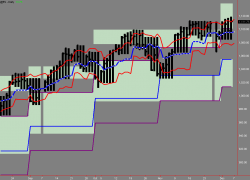 Technical analysis is for the short term. While technical indicators do not meet the test for medium or long term price projections, they are priceless when used in combination as consistent warning signs to alert U against short-term hazards. The entire objective of a technical analysis training course is to enable U to position U’reself in the market under favourable terms. Technical analysis must be short-term enough to enable U to exit the market when the trend to which U have committed U’reself develops an increasing potential for reversal. This is your new blog post. Click here and start typing, or drag in elements from the top bar.
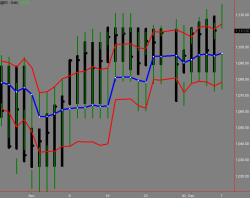 In order to ascertain price movement – momentum, one must apply technical analysis, and this technical analysis must be short term oriented. That is why I am delighted with the application of Point & Line Charting expressed further on in this book. There are myriads of approaches available to the trader. In the following section I will be listing but a few. The trader must accept those to which he is obliged to commit himself, based on his/her acceptance of them. His/her acceptance must flow from knowledge, experience and awareness. The fewer techniques U employ, the happier U will be. U will find however, Point & Line ( P&L ) Charting flows very well with any or all of these methods, because P&L charting is the penultimate in short-term day to day and intra-day analysis. I know of no system wherein that particular system analyzes market momentum, by taking into account the high/low/close of the specific day U wish to execute prices. However, the general medium to long term approaches, which includes fundamental analysis, enable the trader to be aware of price movements and identifying the broad picture. It is very important to be able to identify the ” picture ” in chart formation analysis. This is your new blog post. Click here and start typing, or drag in elements from the top bar.
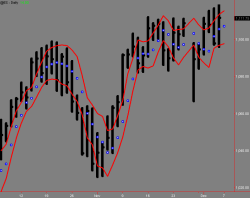 A study of market action is an investigation of people inter-reacting with the market. Since we cannot insert people into test-tubes ( at least not yet ) to research their psychological make-up, we can only use proxies – - prices , which provide a means to measure the results of people’s reactions. Whatever one believes is being measured, the entire approach is being based on the assumption that certain repetitive patterns of price and action will re-occur, either before, during or after a significant price movement. To my mind, U shud have charts which clearly tell U the tale of the market and which wud be the most helpful to U in U’re forecasting ability. U’re chart is meant to be a road-map on the path to fortune. If it is too detailed, or pretends to do this, U mite as well frame it and hang it on the wall. Most charting systems contain the basic selling/buying pressure studies. This is your new blog post. Click here and start typing, or drag in elements from the top bar.
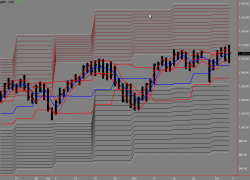 The chartist is always concerned with his ability to recognize the commencement of either a congestion area, a trend, or a trend reversal. So long as the trend line remains valid the market continues to parade in a succession of highs and lows. And, the prevailing trend is assumed to be intact. The penetration of a trendline cud raise the possibility of a reversal. The downside penetration of an uptrendline cud carry a bearish implication. In the reading of any chart formation, it is important that the underlying explanation of what is happening is held in mind. The “floor”,”ceiling”,”random walk”,”trending”,”discounting”, all help in the interpretation of charts. This is your new blog post. Click here and start typing, or drag in elements from the top bar.
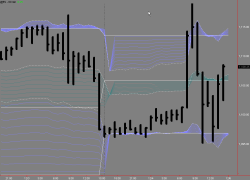 The speculator need not be a statistician to trade in commodities successfully. In fact, more than one statistician has failed miserably in these markets when he attempted to apply his favorite model. The most expensive model in the world will not improve the actual, correct interpretation of the market. No system is that finite. The best systems always involve the writing down of the reasons why that system is applied, at a given time. The written statement must answer the statement ” Do U want to buy or sell this commodity”, reducing U’re reasoning to a simple statement or two, encompassing maybe the fundamental, technical and outside opinions, containing the outside opinion last in waying them least. Essentially however, market fundamentals underpin trend direction, while charts, volume waves, wiggle-waggles portray the market activity. There are two categories of analysis. 1 ) academic research – whether the markets are non – random or random etc. 2 ) practical market analysis This is your new blog post. Click here and start typing, or drag in elements from the top bar.
|
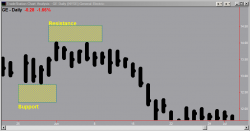
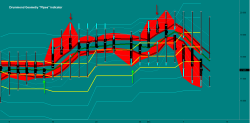
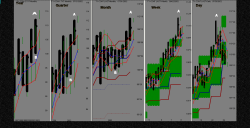
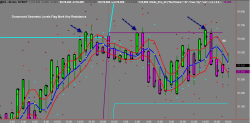
 RSS Feed
RSS Feed